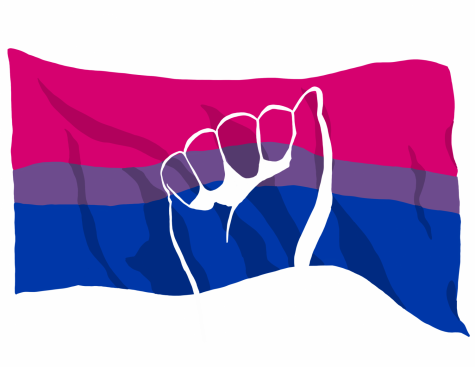Students explain, celebrate bisexuality pride
September 23, 2020
Bisexuality Day, celebrated on Sept. 23, recognizes and empowers the bisexual community, a group of individuals who are often misunderstood due to stereotypes and a lack of information.
Bisexuality is a sexual orientation where people experience sexual, romantic or emotional attraction to more than one gender.
According to the Williams Institute at UCLA, about 9 million Americans identify as LGBTQ+, and more than 160,000 of those people consider themselves to be bisexual, making them the majority of the community.
The first official celebration of bisexuality was in 1999 after activism protests from the LGBTQ+ community erupted, according to the Gay & Lesbian Alliance Against Defamation. The day was created by bisexual rights activists Wendy Curry, Michael Page and Gigi Raven Wilbur to shed light on bisexuals around the world and explain the prejudices and challenges they face.
As people celebrate the 21st annual Bisexuality Day, members of the LGBTQ+ community are coming together to share their stories and explain the struggles of being open about their sexuality.
Megan Flynn, a freshman digital media technology major, identifies as bisexual. She said she realized she was bisexual early, but she did not know what the orientation was called until her late teens.
“I watched a lot of ‘Kim Possible’ growing up, and I guess you could say I had a crush on her,” Flynn said, laughing. “But in high school, I had crushes on boys and I dated boys, so it just kind of dawned on me one day that I didn’t love someone for their gender, but for who they are.”
When Flynn told her friends about her orientation, she said they did not understand because she had a boyfriend at the time.
“They basically thought I was saying ‘I’m gay,’ but I was really saying I like both men and women,” Flynn explained. “I really have no problem being romantic with a man or a female. That’s why I identify as bisexual. I like them both.”
Nora Kollar, graduate assistant at the Center for Gender and Sexual Diversity, said people typically assume bisexuals are confused or cannot make up their minds. She also said bisexuality is often overlooked or disregarded by people in and outside the LGBTQ+ community.
“The lack of representation or visibility may affect people differently and create more questions (about) sexual identity,” Kollar said. “It is important to recognize bisexuality as a valid sexuality, and having a bisexuality pride day helps bring recognition to the community.”
Sam Hennegan, Eastern’s Pride Vice President, said the best way to show support for bisexuals or people questioning if they are bisexual is to just be there for them.
“Let them know that you care about them no matter what and that their gender or sexual orientation does not change your opinion of them,” Hennegan said.
Eastern’s GSD Center provides a safe space for all students to be comfortable with sexuality. It offers programs to teach students and faculty about different gender, sexual and romantic identities.
Caitlyn Craig can be reached at 581-2812 or at [email protected].














































